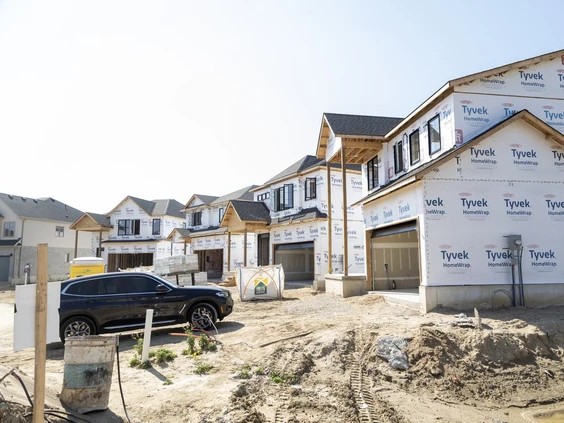Ontario Housing Starts Hit Lowest Point Since 2009 — What Buyers & Sellers Need to Know
In a surprising turn during what is usually a season of construction momentum, Ontario's housing starts have plummeted to their lowest level since the 2009 financial crisis.
According to the latest report from the province’s Financial Accountability Office (FAO), only 12,700 housing units broke ground in the first quarter of 2025. That’s a staggering 20% drop from the same period last year—already considered a slow year for new construction.
This sharp decline raises important questions about the province’s ability to meet its long-term housing goals—and what this means for the broader real estate market.
A Far Cry from the 1.5 Million Home Goal
The Ontario government has set a target of building 1.5 million new homes by 2031—a key part of addressing the province’s long-standing housing shortage. But at the current pace, that ambitious goal is starting to look increasingly out of reach.
This year’s spring budget revised its forecast downward, projecting only 71,800 housing starts in total for 2025, a sharp drop from the previous estimate of 92,300. That’s a significant shortfall in a province where demand for housing—especially affordable housing—remains high.
What's Driving the Slowdown?
The FAO’s report paints a picture of a mixed economy. While employment, exports, and manufacturing are on the rise, housing is the weak link.
According to Financial Accountability Officer Jeffrey Novak, there are two major forces slowing down new home construction:
-
High Construction Costs: Rising prices for materials and labour continue to make development expensive and risky.
-
Weak Home Sales: Buyers are still grappling with affordability issues, especially after years of interest rate hikes. This has made developers more cautious about launching new projects.
As Novak puts it, the combination of these factors has “negatively affected home building”—despite some positive signals in other parts of the economy.
Will Infrastructure Investment Help?
In response to the slowdown, the Ontario government says it’s investing billions into infrastructure to help get more homes built. A spokesperson for Housing Minister Rob Flack pointed to “bold action” the province is taking—such as streamlining development approvals and reducing delays.
Still, the province acknowledges several major challenges remain out of its control, including:
-
Global economic uncertainty
-
Ongoing supply chain disruptions
-
New tariffs and trade tensions under U.S. President Trump’s administration
The reality is that even with policy support, the housing sector is facing headwinds that could take years to ease.
What This Means for Ontario’s Real Estate Market
For buyers, the slowdown in new construction could lead to tighter inventory in the years ahead—especially as population growth continues to drive demand. While resale homes may be more plentiful in 2025, future supply could become even more limited without more homes being built.
For sellers, this limited new inventory may help support property values in some markets. However, ongoing affordability challenges mean that sellers still need to price strategically and work with experienced real estate professionals who understand shifting buyer behaviors.
For investors and developers, the reduced pace of new housing starts may signal an opportunity—if and when construction costs stabilize and demand rebounds. But in the short term, many will likely wait on the sidelines.
Ontario’s housing market is entering a pivotal moment. While the demand for homes hasn’t disappeared, the supply side is clearly struggling to keep up. With only 12,700 new housing starts in Q1 2025—the lowest level in over 16 years—it’s clear that significant work lies ahead if the province wants to stay on track for its long-term housing goals.
As we continue to monitor the market, one thing is certain: buyers and sellers need to stay informed, realistic, and prepared to adapt. Whether you're planning to make a move now or down the road, understanding where the market is headed will help you make smart, confident decisions.
Need Help Navigating This Market?
At Maria Homes, we’re here to help you buy or sell with confidence—even in uncertain times. Reach out today for expert advice tailored to your goals.
